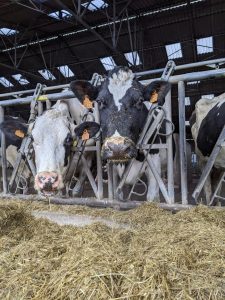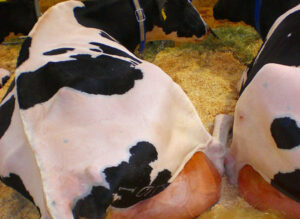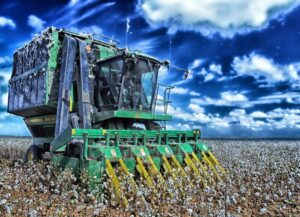Álvaro García
As a livestock scientist, much of my career has centered on advancing animal health, productivity, and well-being. Yet one topic continues to raise both practical and philosophical challenges: how do we reconcile animal longevity with production efficiency? In livestock production, longevity is often framed in strictly biological or economic terms—how long a beef cow remains fertile, how early a steer reaches market weight, or how many lactations a dairy cow completes before being culled. These are concrete, data-driven indicators used to assess herd performance. But outside the confines of agricultural science, especially amid rising concerns about animal welfare, longevity takes on a broader meaning. It becomes a symbol tied not just to biology, but to ethics, emotion, and public perception.
This creates a dilemma. On one hand, we understand different production systems yield different expected lifespans, shaped by valid factors such as farm economics, consumer preferences, and environmental sustainability. On the other hand, society increasingly assigns moral significance to the duration of an animal’s life. Should we be talking about an animal’s right to a “natural” lifespan? Or should the focus be on ensuring a life free from pain and fear, even if that life is shorter than the animal’s biology might allow? Can we responsibly apply human concepts like dignity, end-of-life care, or humane death to animals—without falling into oversimplification or inadvertently offending cultural or professional sensibilities?
These are not abstract questions, but they directly influence how livestock production is viewed by the public and how future agricultural policies will be shaped. How we define and communicate animal longevity has the power to build bridges between science, society, and ethics, or to increase the antagonism between those who work with animals and those who question the very legitimacy of doing so.
Rethinking longevity in livestock production
We need to try and reframe the concept of longevity, not as a fixed biological endpoint, but as part of a deeper conversation about animal well-being, system sustainability, and ethical responsibility. This shift is very important to engage with public concerns transparently and design livestock policies that reflect both scientific understanding and societal values.
As society continues to re-evaluate its relationship with animals, the topic of longevity in livestock systems is becoming an important focal point in policy discussions around animal welfare, sustainability, and ethics. Longevity, or how long farm animals live, is a deceptively simple concept that contradicts the complex realities of livestock management across different production systems, from beef feedlots to cow-calf operations to dairy farms.
Yet, as concerns about animal well-being grow and animal rights activism increasingly shapes public opinion, the way we talk about longevity needs to evolve, not just as a biological or economic measure, but as an ethical and policy-relevant issue.
Longevity in livestock should not be viewed in isolation but framed within the specific biological, economic, and welfare realities of each animal production system. Let’s take for example large ruminant production systems:
- In beef feedlot operations, animals are slaughtered at a relatively young age, often under two years, because younger animals produce the marbled meat demanded by consumers. In this system, longevity is not the goal — efficiency and meat quality are.
- In cow-calf operations, longer cow lifespan is generally desirable as they contribute to herd sustainability by reliably producing and raising calves. Health, fertility, and maternal behavior are more important than age alone.
- In dairy production, cows may be capable of producing milk into their second decade of age, but many are culled early (US average 5–6-year-olds) due to reproductive or health challenges. Here, the conversation turns to how to better support healthy longevity, not just longer life.
Each system has unique drivers. But longevity becomes meaningful when tied to a broader goal: ensuring quality of life during the time animals are under human care. In any animal production system, longevity alone is a poor proxy for well-being. An animal kept alive, but suffering is not a well-being success, nor is an animal that appears healthy and productive, only to be culled unexpectedly at a young age due to hidden issues. True animal well-being requires looking beyond lifespan to include quality of life, resilience, and the ability to thrive over time.
“Quality of life over quantity of years.”
This principle is becoming increasingly important to producers, consumers, and policymakers alike. In livestock systems, the aim should not be to prolong an animal’s lifespan at any cost, but rather to ensure that the time the animal does live—however long—is marked by comfort, good health, and dignity. When animals are well-managed and cared for, longevity often follows naturally as a result, not as the main goal.
This approach aligns closely with the concept of animal well-being as defined by the American Veterinary Medical Association (AVMA). Unlike welfare, which often focuses on external conditions, well-being includes the animal’s mental and emotional state as well. Although there is no single, universal definition, animal well-being is widely understood as the overall quality of life an animal experiences. It includes the absence of pain, fear, or illness, but also the presence of positive experiences such as comfort, contentment, and the freedom to express natural behaviors. As the AVMA notes, well-being is about more than minimizing suffering—it’s about enabling animals to live meaningfully within the context of their environment.
Focusing on quality of life supports the best practices of animal welfare. This includes minimizing lameness, ensuring clean and comfortable housing, providing balanced nutrition, reducing stress, and maintaining reproductive and metabolic health. These strategies often improve both well-being and productivity—especially in dairy and cow–calf systems—demonstrating that responsible care can benefit animals and support farm sustainability at the same time.
At the same time, it is essential to recognize the distinction between animal welfare and animal rights, two fundamentally different ethical frameworks. While welfare advocates focus on improving the conditions and treatment of animals in human care, rights-based arguments often oppose the use of animals altogether, regardless of how well they are treated or how long they live.
This divide presents challenges for future agricultural policy. Any effective regulation must acknowledge these differing moral perspectives while also clearly articulating the vital role of well-regulated animal agriculture in food systems worldwide. One way to frame this responsibility might be:
“We understand that some believe animals should never be used for food. But in societies where animal agriculture remains essential, our responsibility is to ensure that animals live lives worth living—and experience death free from pain and fear.”
This perspective does not ignore ethical concerns, nor does it diminish the contribution of producers. Instead, it reinforces a stewardship ethic—one built on humane, respectful care throughout the entire life of the animal.
Implications: avoiding the “natural lifespan” trap
As discussions around animal welfare, ethics, and sustainability evolve, it’s important to move beyond simple measures like lifespan and toward a more holistic understanding of animal care. A common narrative in animal rights arguments is that livestock are denied their “natural” lifespan. However, in nature, many animals die from predation, disease, or starvation and never reach their biological potential. In contrast, animals raised in well-managed systems are protected from these risks and often experience more comfort—even if their lives are shorter.
Ethical care within these systems also includes timely and humane euthanasia or slaughter when needed to prevent suffering. In this context, lifespan alone should not serve as a proxy for welfare. A shorter but well-supported life can often offer more well-being than a longer, more stressful existence in the wild.
Policy discussions around livestock longevity should reflect this nuance. Instead of focusing solely on how long animals live, efforts should support programs that improve their quality of life and extend productive longevity when appropriate. This includes better housing, hoof care, and the use of genetics that enhance fertility and resilience. Transparency and clear ethical standards are also essential to meet public expectations of humane treatment. Moreover, dialogue among producers, scientists, and the public is vital to ensure that evolving social values are reflected in practical, evidence-based regulation.
Sustainability must be part of this conversation. Animals that remain healthy and productive for longer periods reduce the need for frequent replacement, which helps lower environmental impact and supports more stable herd management. This connection between animal care and climate-conscious farming further strengthens the case for responsible, long-term thinking.
Ultimately, this conversation offers common ground among producers, consumers, policymakers, and even some ethical critics. It promotes continuous improvement, science-based standards, and mutual respect for animal life and agricultural livelihoods. Longevity in livestock isn’t the goal, it’s often the natural result of thoughtful, humane, and sustainable management. When longevity emerges as a byproduct of thoughtful, humane, and sustainable management, it signals a livestock system that works, for animals, producers, and the planet.
© 2025 Dellait Knowledge Center. All Rights Reserved.









